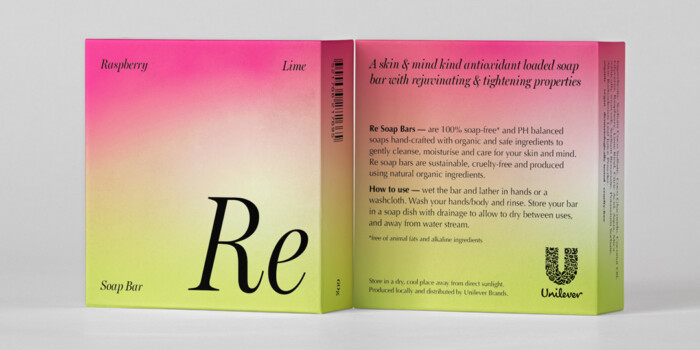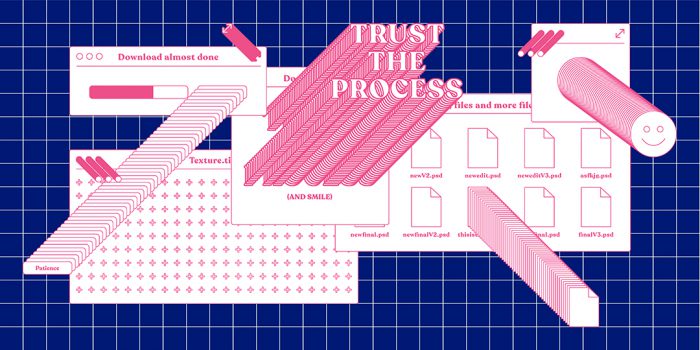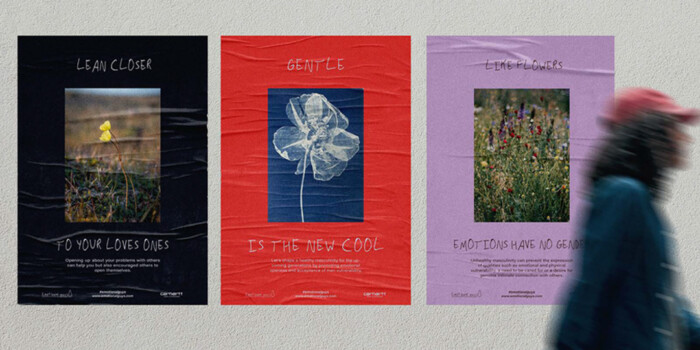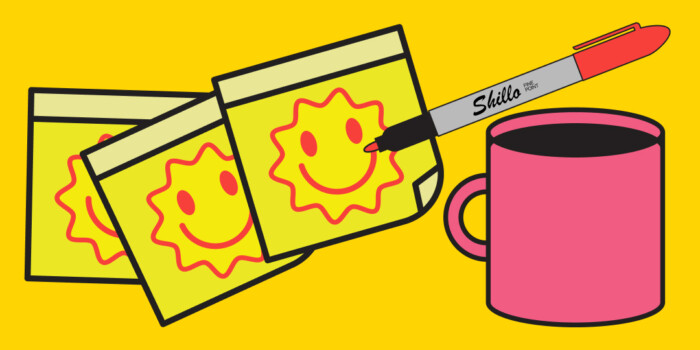8 Tips for Your Graphic Design Portfolio

When applying for graphic design jobs, your portfolio is everything. Most employers skim the e-mail and cover letter, skip the CV and go straight for the goods—your portfolio. You only get one first impression, so make it a good one.
I’ve taught at Shillington for 4+ years, and one of the highlights of the course is watching our students pull together their best work into a polished portfolio. It can be a testing, and at times, overwhelming task. Ultimately the pride and sense of achievement the students feel at the end is worth all the sweat and tears.
Most designers will tell you that a portfolio is never perfect nor finished, but here are some tips to help you on the right track.
1. Show more than just “beautiful” design
Showcase the design process and explain how you got from initial idea to solution.
A good portfolio should explain or demonstrate how you problem solve.
Probably the top piece of feedback we hear from employers is that they want designers who can think well. This means defining the problem accurately, researching and developing concept, collaborating well, implementing feedback and executing the design with a high level of finesse.
Many projects are probably self-explanatory but others aren’t. Including notes and sketches about the project can go a long way. If you are not showcasing your design thinking in your portfolio, you are robbing yourself of the opportunity to demonstrate one of the key skills employers look for.
It is not necessary on every project, but including a couple of strong examples will greatly improve your portfolio and give you some great talking points in an interview.
2. Be thoughtful about what you include.
A good portfolio presents the “best” work, as defined by you. Select only your strongest pieces. It has been said that “seeing one bad project can undo all the good work”.
Don’t grab everything you’ve ever created. Set aside time to go through all of your work and exclude anything you’re not proud of. It’s much better to go deeper on a few projects than shallow on many projects. Present work that gets you excited, that shows off the type of projects you like and demonstrates what you’re capable of.
Consider breadth and don’t just include one area or type of design. Demonstrate versatility and the ability to work across a range of styles and projects.
Saying that, don’t be afraid to tailor your portfolio to the particular company or area of design you want to work in. A digital folio (or editable printed portfolio you can slip projects in and out of) allows you to create a unique offering for each job interview.
3. Consider how you tell the story.
Consider the pace and sense of anticipation when viewing your portfolio. Use introduction pages and the way you order your projects to build storytelling into your portfolio. For example, can you have a hint of what is to come and then the reveal?
Make sure your projects flow nicely from one to the next. You don’t need to group all digital projects together and all logos together. Instead look at how the colour and style of the projects work together.
4. Remember the importance of honesty.
Honesty in a resume or portfolio makes for a happy employer and employee! If you say you’re capable of more than you are, it will likely end in frustration. If you are honest about what you’re capable of and what you want to learn, you will set yourself up for a great match between yourself and your employer.
Don’t be afraid to be yourself. Honesty in your portfolio ensures you end up working with people who will like you. Be honest and transparent.
Your work is one thing, but *you* are the other side of that work. Potential employers viewing your portfolio want to see what you’ve produced, but more importantly they want to see who you are, why you do the work you do, and why they are going to love spending everyday with you!
5. Master your attention to detail.
Crazy as it sounds, all your great work can be undone by something as small as a typo or a bit of dodgy typesetting. Remember that attention to detail is a highly-valued skill. This is another compelling argument for a digital portfolio. The number of printed folios that make it through to the printers with errors is high. Especially when you are faced with time constraints and fatigue from many a late night reviewing your own work. A digital folio is endlessly updatable.
6. Know the importance of mock-ups
Showing a design in context can be incredibly effective and compelling. That said taking a photo of a website on your monitor is not acceptable. It is worth spending the time to select and present the right images to tell a compelling story.
So many great portfolios have been let down by poorly executed mock ups. Don’t waste energy photographing a badly printed and assembled design. If you are digitally mocking up a design, make sure your image choice is appropriate. Think about the client and style of project and aim for images that will suit. If you are having trouble getting it to look realistic, ask for help, or alternatively use a mock up that uses smart objects to do the hard work for you!
7. Be sure to roll out a design across multiple mediums
Roll out is another great way of showcasing your design thinking and your ability to translate a design across a variety of mediums. The key is to make sure you make appropriate choices of what other items you can apply your initial design to. Avoid slapping the same design onto various items such as hats, t-shirts and postcards if it does not make sense for the client to market themselves in that way. You are trying to showcase how you have considered the client’s needs, as well as how to adapt a design across different contexts.
8. When in doubt, keep it simple
Keep it clean, simple and not overly designed. Your work is the what employers are interested in not fancy gimmicks.
Finally, remember that your portfolio is a work in progress. Trends, techniques and technology change quickly and can look dated. Update it often and remember you will get better and better with each new project!
Want to win some amazing prizes and stay in the loop with all things Shillington? Sign up to our newsletter to automatically go in the draw.







